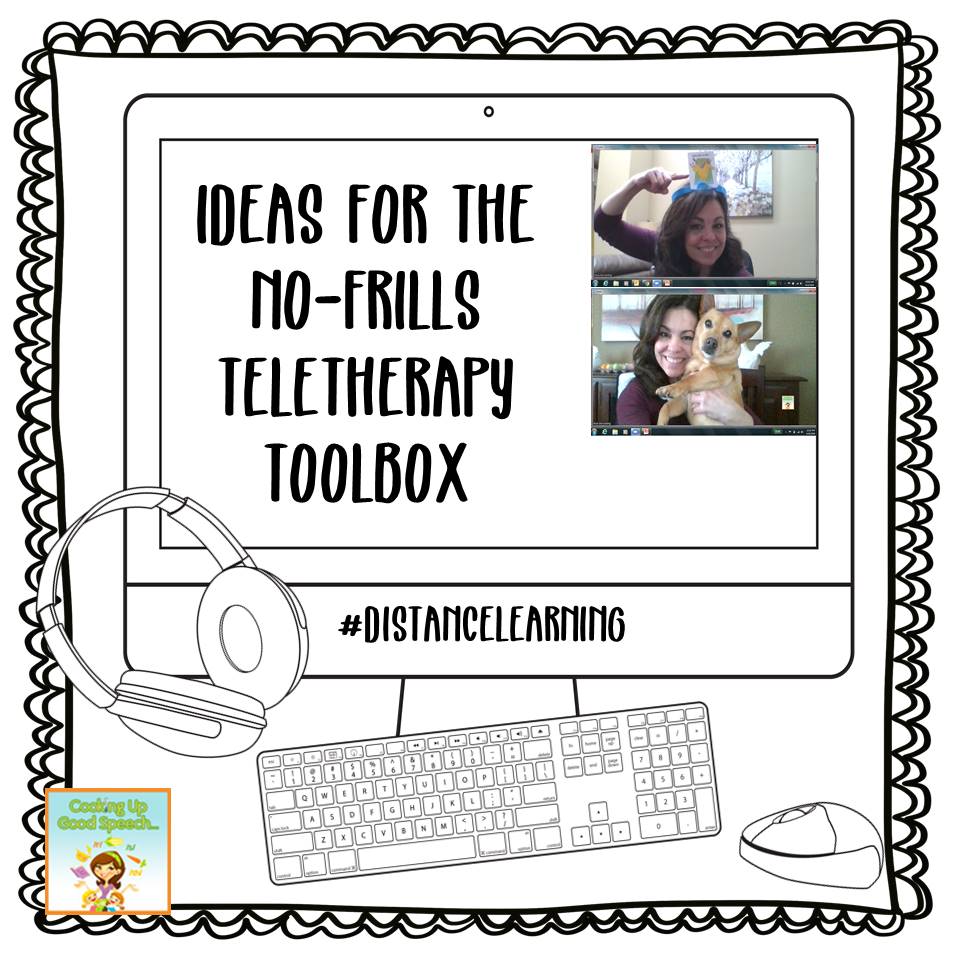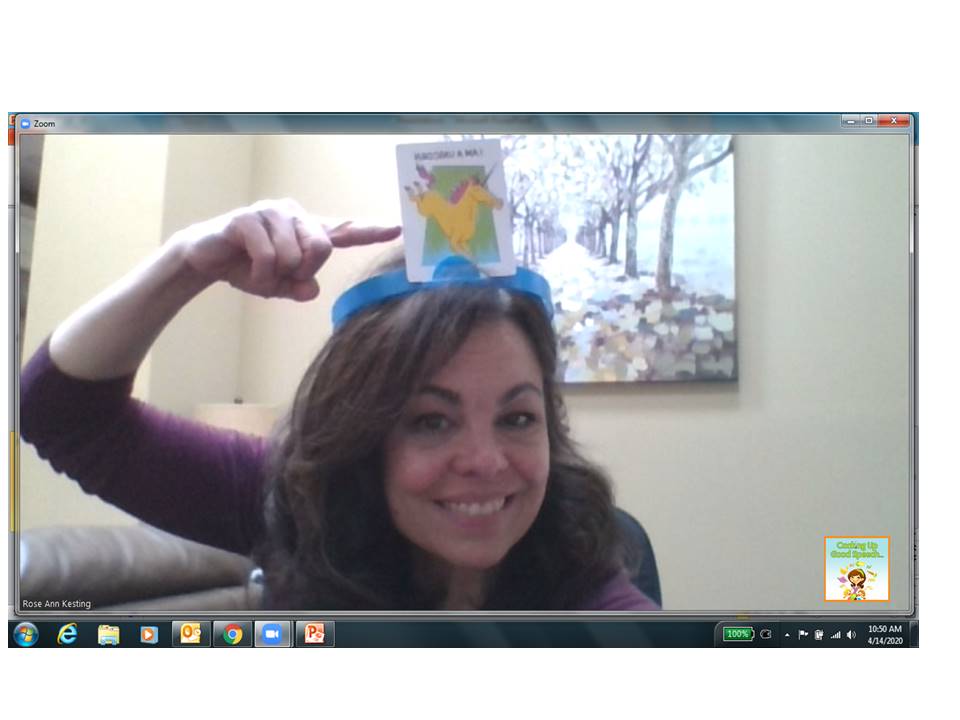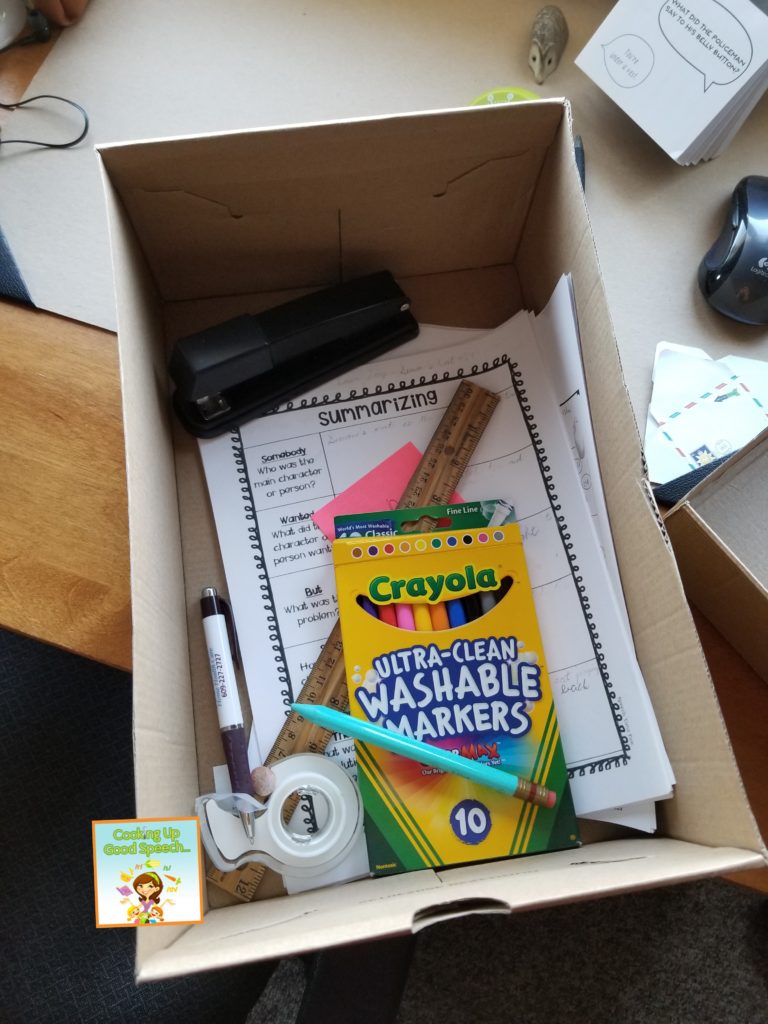
Distance learning day 16…or is it 23? …or 19?….heck, I can’t even remember what day of the week it is let alone how many days I’ve been doing teletherapy! I hope everyone is having “fun” with this new way of living, learning, teaching, and thinking! (Obviously, I’m being a little sarcastic.) I know how challenging this has been for me and for so many of us, but putting it all in perspective, right now I am so thankful for my health and my family’s health. I am also grateful for all the amazing people who are on the front lines—-from the healthcare workers, first responders, grocery store employees, truck drivers…the list goes on. I am appreciative for the fantastic webinars and trainings that have been making my head spin with information about Zoom, Google Classroom, Google Meet, etc. etc……..and all the great digital resources available to use in my therapy sessions. By the way, Boom Cards are LIFE for me right now! They are the highlight of my therapy sessions—I LOVE them and so do my students! But I have also discovered some very simple, low-tech, low-prep techniques to combine with my high-tech video-screen-sharing sessions. Sometimes SIMPLE is BEST. Our students are still adjusting and so are we. They are so happy to see us in our virtual speech/language session. It brings a sense of normalcy and routine that many of them are in need of. So keeping it simple without overwhelming them with all the bells and whistles that we are learning is often more effective and productive, as I have been finding out during my own teletherapy sessions. So, consider if you want to sprinkle a few fun and functional ideas into all those fancy video-digital-zooming-googling-sharing sessions, I have a few ideas to add to your no-frills toolbox……
1- Bring your pet to school! Have you noticed that many of your students have pets milling around as we conduct teletherapy sessions? If you have a pet and your student has a pet, then you may be able to give this a try. My dog is small enough to put on my lap so I position her in clear view of my screen so that my student can see her. I ask my students to compare the similarities and differences between my pet and their pet. If permitted, I ask my students to hold their pet in view of the screen so we can jointly view both pets. It has been a fantastic way to address the concept of same/different and compare/contrast, areas that many of my students struggle with. Compare their features (ears, eyes, noses, tails), fur color and length, size, age, gender, temperament, breed, species. So far, we have only compared dogs and cats, but I’m waiting for one of them to show up with a pet lizard or snake!

2-Describe it/Virtual Show-and-Tell! I ask my students to look around the room where they are seated and locate an object and describe it to me. Turn this activity into show-and-tell by asking them to have something ready to share prior to the start of the session (a toy, a favorite book, a random object). It’s a great 5-minute warm-up activity and I have found it especially helpful during the first video sessions when our students need to be put at ease while adjusting to this new way of learning. If you and your students are familiar with the EET (Expanding Expression Tool) for describing, it’s a great strategy for guiding them as they explain objects.
- What group/category does it belong to?
- What do you do with it? What does it do?
- What does it look like?
- What is it made of?
- What are its parts?
- Where would you see it? Where would you use it?
- What else do I know?
3–Play a game! Reach out to your students (well in advance of your session) to find out if they have a game at home that you also have. I have been conducting some fantastic sessions using the game Hedbanz. We are having so much fun while wearing the silly bands and trying to guess each other’s cards (an effective way to work on expressive language skills). Do you have a board game that you both own? {Play it together and use it as a reinforcer while addressing a variety of speech and language skills. Battleship is another favorite! It is the ultimate barrier game. If you had success with it in your face-to-face sessions prior to distance learning, and if it’s accessible in your homes, then why not keep that same momentum going in your teletherapy sessions? Don’t let distance keep you from maintaining those great connections that you have been building all year long! If nothing else, the familiarity and routine of the game will create a sense of comfort and normalcy for your students.

4-Share a recipe! My students know that I love to cook! I bake for my teaching staff all the time! I go into a class once per month and do a whole-class cooking lesson with the students. The inspiration for my blog is to use cooking as a means to teach good communication skills. So naturally, when we started distance learning, I couldn’t help but continue to share my love of food and cooking with my students. I send them a weekly recipe that they can make with their families at home. Of course, this is optional, however, it’s one more way of encouraging good communication through direction following, sequencing, executive functioning, conversation skills…..the list goes on. I’ve shared a recipe for St. Patty’s rice crispies from my blog, an amazing overnight french toast, and last week, a super simple and delicious pizza dough recipe. One of my students was so excited to make this that she sent me pictures! Sooo many pizzas!! We used this as an opportunity to address some important language skills in her subsequent teletherapy session. She was asked to recall the ingredients and sequence the steps in making the dough, describe the toppings, and explain how she and her family worked together to create the pizzas together. Who knew distance learning could be so delicious! Find more inspiration from my student’s food masterpieces on my Facebook post:


5- Address social/emotional communication and executive functioning! Talk about organization, time-management, emotions and small talk! Many of my students need support in these areas, especially at this time. We address these skills regularly in our weekly therapy sessions, so during teletherapy sessions, we are picking up right where we left off. Our discussions often revolve around ways to keep all their subject area assignments in order, whether it be digitally or in hardcopy form. It has been so important to “check-in” with them to see how they are managing this skill. I ask them if they are using their school planner? a checklist that they can cross out as they complete tasks? post-in notes for reminders? a timer of some sort to keep track of time spent on tasks? I created a checklist handout to remind them of these important strategies and a shoebox organizer system that some of my students decided to create at home (here is a blog post where you can read more about it. )

Emotional regulation, another aspect of executive functioning has become an important part of our scope of practice. In teletherapy, we continue to address this concept via discussion of real and made-up scenarios about small problems and big problems and putting them in perspective. (ie–small problem: I can’t see my friends right now in person; big problem: me or my family member is sick because of the virus). Having face -to- face video sessions allows me to keep working on their conversation skills and practice engaging in small talk topics. Growth mindset, as well as mindfulness, are two areas that I have been focusing on during this school year—two areas that are definitely being challenged and highlighted right now. I monitor the tone of the language my students are using. We talk about the glass half full (growth mindset) and turning negatives into positives within their verbiage. We discuss visualizing (picture yourself in your favorite place or on a fun family vacation) while practicing some deep breathing (mindfulness). I remind them that sometimes spending a few minutes on these strategies can change the tone and outlook of our entire day.
NOTE: I work with primarily older students so I have very few articulation cases. ANY of the above-mentioned activities are great ways to target articulation, especially for self-monitoring and carryover.
What other simple, low-prep strategies have you been using to conduct therapy? Keep up the awesome work! I’d love to hear how teletherapy is going for you! Stay home, stay safe!











Leave a Reply